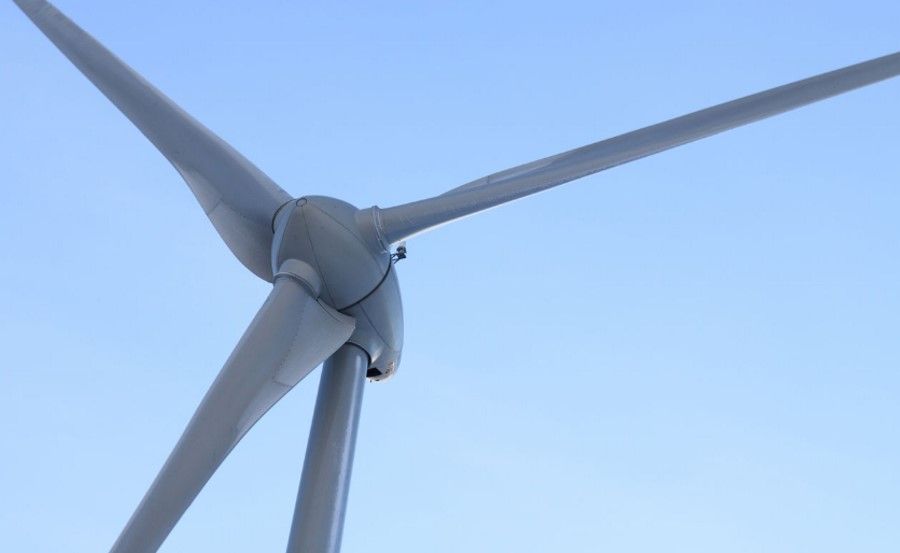
Polish students design backyard wind turbines
Two wind turbines – with a horizontal and vertical axis of rotation, which can be used in different wind conditions – have been developed by students from the GUST team of the Technical University of Lodz. Small wind turbines of their design have won an international competition held in the Netherlands for the past three years.
This year’s edition of the International Small Wind Turbine Contest, organized by the NHL University of Applied Sciences in Leeuwarden, the Netherlands, involved 10 teams from Europe, Canada and Egypt. Design of a domestic wind turbine with a horizontal axis of rotation łowild studentsoin the third time proved to be the best.
– For three years, they have been designing small wind turbines, whichore can be used in urban areas. These are turbines thatore we will be able to put on the roofs of the houseoin single-family or rooftop blockoin the center of the city and we will be able to produce our own electricity thanks to them,” Damian Kądrowski, coordinator of the student project GUST, operating at the Institute of Fluid-Flow Machinery of PŁ, told PAP.
So far, students have only built turbines with a horizontal axis of rotation. This year they also presented a structure with a horizontal axis of rotation – H-rotor type.
To their "flagship" of a horizontal-axis turbine design, they introduced many innovative design changes to the. – This year we completely upgraded the generator and used an innovative coil switching system in the generator, ktory allowed us to adjust the aerodynamic power to the electric power, thanks to this we increased the efficiency of power generation,” added Kądrowski.
The students also developed their own aerodynamic profiles, or turbine blade geometry. They printed the blades using 3D printing technology, tested them in a wind tunnel and conducted numerical simulations.
Małgorzata Stępień from the Faculty of Mechanical Engineering at PŁ, whichora responsible for aerodynamics in the GUST project admits that most of the student teamsow models existing geometries, reworks them and adapts them to our own needs. – We this year went one step further and created our own geometry from scratch, ktora is our own design,” she stressed.
The turbine they designed has a design similar to standard wind turbines, but was created on a much smaller scale. It consists of a rotor with three blades, before whichorym a special streamlining has been installed, causing the air not to decelerate and flow efficiently onto the blades. The wind causes the rpmot of the blades, and the mechanical power is transferred to the generator, ktory generates electric power.
The students also developed a brake and control panel of their own design. The whole thing is finished with a special fin, ktora makes the turbine self-align according to the direction of the wind.
A competition turbine with a vertical axis of rotation can produce a maximum power of approx. 600 W at a wind speed of 12 m/s. Stępień emphasized that the mainohe main idea behind such small wind turbines is not to directly power electrical appliances. – They serve e.g. for charging the battery packow, with ktorych are only powered by devices e.g. computer, small lodowka or heating in the bathroom,” added the student.
The students developed a turbine with a vertical axis of rotation for the first time this year, because the two types of turbines are suitable for operation in completely different wind conditions. The advantage of horizontally rotating turbines is that they produce more power and have higher efficiency, but they also take off at higher wind speeds. The situation is different for turbines with a vertical axis of rotation. These give less maximum power, but start to work in weaker winds. Therefore, when erecting them, it is necessary to take into account the wind conditions in a given area.
– It may turn out that where we would like to use this technology, the wind blows at too low a speed and the gusts are too weak to unleash such a classic turbine. Then the ideal solution are wind turbines with a vertical axis of rotation, whichore generate less power, but take off much earlier – need a lower wind speed to start working,” explained Stępień.
Backyard small wind turbines are already popular in the West, but students hope they will also be used to a greater extent in Poland. Their combination with photovoltaics gives the possibility to generate electricity at roThe project will be carried out in all weather conditions, regardless of the ogoln the electric power grid.
The students make no secret of the fact that they would like to commercialize their prototypes. They are announcing further improvements. They also want to sprob to compete in the prestigious Collegiate Wind Turbine Competition, organized in two years’ time by the State Department of Energyoin the United.
The project is supported byoThe mission was financed with funds from theow awarded by the Ministry of Science and Higher Education, under the program "Best of the Best! 2.0".
The GUST (Generative Urban Small Turbine) team is a student project launched in 2015, and operates as part of the Student Power Engineering Research Groupoat the Institute of Fluid-Flow Machinery of PŁ. It brings together studentow of the Department ofow: Mechanical Engineering, Electrical Engineering, Electronics, Computer Science and Automation, Technical Physics, Computer Science and Applied Mathematics, Management and Production Engineering, and International Faculty of Engineering.


